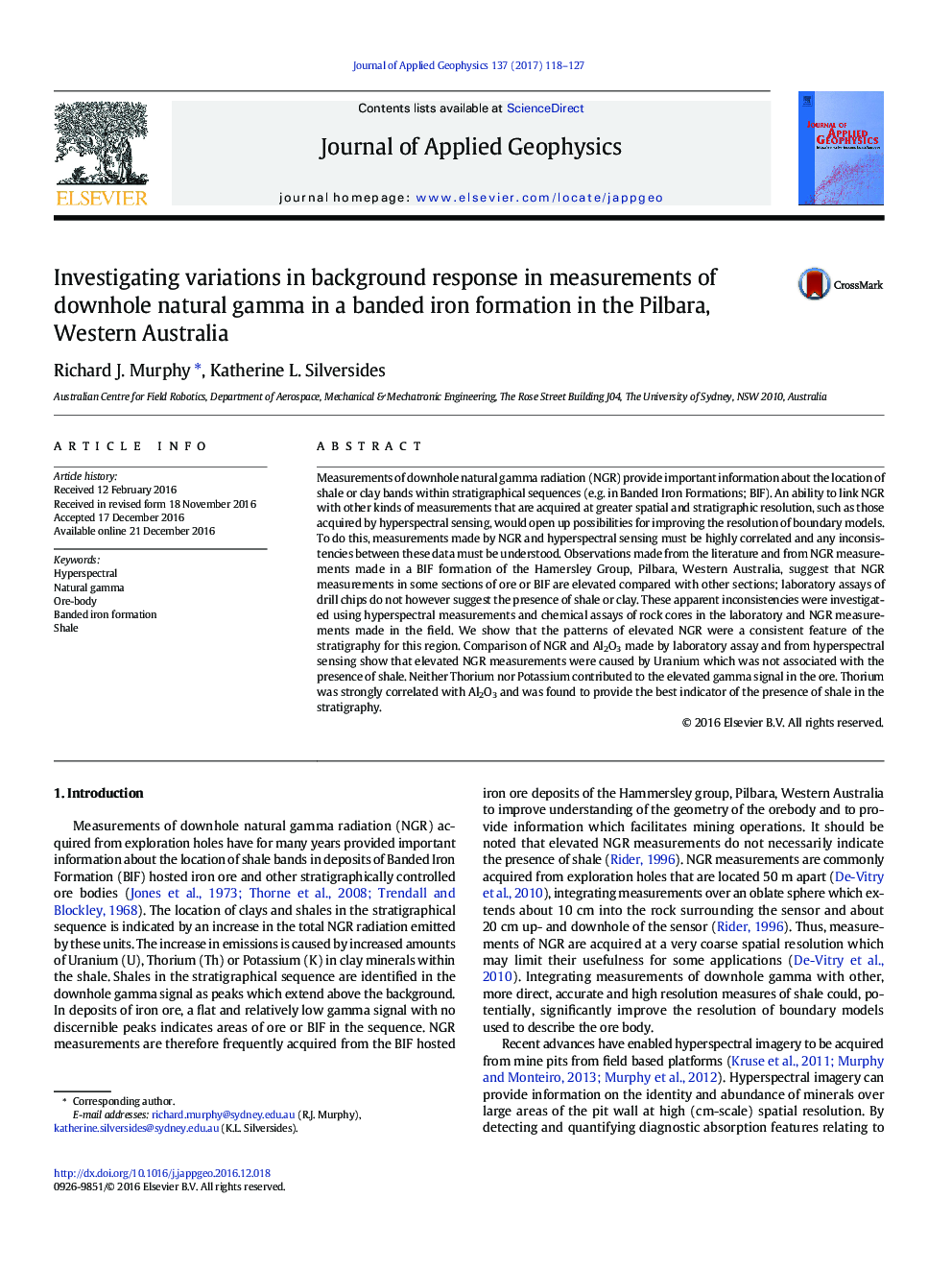| Article ID | Journal | Published Year | Pages | File Type |
|---|---|---|---|---|
| 5787183 | Journal of Applied Geophysics | 2017 | 10 Pages |
Abstract
Measurements of downhole natural gamma radiation (NGR) provide important information about the location of shale or clay bands within stratigraphical sequences (e.g. in Banded Iron Formations; BIF). An ability to link NGR with other kinds of measurements that are acquired at greater spatial and stratigraphic resolution, such as those acquired by hyperspectral sensing, would open up possibilities for improving the resolution of boundary models. To do this, measurements made by NGR and hyperspectral sensing must be highly correlated and any inconsistencies between these data must be understood. Observations made from the literature and from NGR measurements made in a BIF formation of the Hamersley Group, Pilbara, Western Australia, suggest that NGR measurements in some sections of ore or BIF are elevated compared with other sections; laboratory assays of drill chips do not however suggest the presence of shale or clay. These apparent inconsistencies were investigated using hyperspectral measurements and chemical assays of rock cores in the laboratory and NGR measurements made in the field. We show that the patterns of elevated NGR were a consistent feature of the stratigraphy for this region. Comparison of NGR and Al2O3 made by laboratory assay and from hyperspectral sensing show that elevated NGR measurements were caused by Uranium which was not associated with the presence of shale. Neither Thorium nor Potassium contributed to the elevated gamma signal in the ore. Thorium was strongly correlated with Al2O3 and was found to provide the best indicator of the presence of shale in the stratigraphy.
Related Topics
Physical Sciences and Engineering
Earth and Planetary Sciences
Geophysics
Authors
Richard J. Murphy, Katherine L. Silversides,
